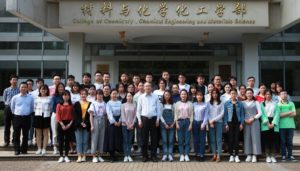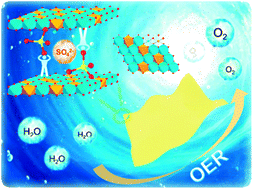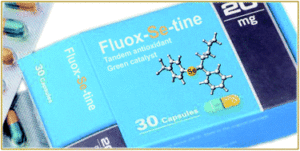I have recently started my PhD – studying spin-crossover complexes, and my synthetic approach is largely focused on the use of mechanochemistry (1). The general response to me saying that I’m busy is: ‘don’t you just grind stuff?’, and the answer is no because I have analysis to do like everyone else. As mechanochemistry is a (mostly) solid state technique, powder X-ray diffraction is a go-to technique for product analysis. Comparison to starting materials can give an indication that a reaction has taken place, and then the detailed analysis can begin.
Elucidation of the structure of novel compounds which are not compatible with NMR, is often facilitated by single crystal XRD (SCXRD). The data from SCXRD can be used to simulate powder patterns for comparison with the mechanochemically synthesized powders.
Colour changes during grinding can also be indicative of reaction success. Therefore, mechanochemistry can allow for rapid screening of a huge number of different reactions in the search for interesting materials. However, don’t be too quick to dismiss an unsuccessful reaction if you haven’t tried liquid-assisted grinding (LAG). Whilst mechanochemistry is typically a solid-state technique, the addition of a small quantity of appropriate solvent (< 1 equiv. in µL per mg) (2,3) can be useful to get the reaction started.
My first experience with mechanochemistry quickly taught me that retrieving powder from a mortar is not easy, no matter how much it is scraped by a spatula. In the spirit of minimizing waste, the un-scrapeable powder is dissolved in a small amount of appropriate solvent and divided up into numerous vials, where techniques such as vapour diffusion and slow evaporation are used to harvest crystals.
I am still new to the world of mechanochemistry and have a lot to improve on, but it has opened my eyes to a synthetic approach that isn’t regularly seen in undergraduate studies and even research labs. It’s a promising area with a lot of applications, where the methodology could easily be manipulated for manufacturing purposes. However, if you are interested in trying some mechanochemistry, it is important to be aware of the potential hazards associated with the neat grinding of certain compounds, especially those which may explode!
References:
1 J. H. Askew and H. J. Shepherd, Chem. Commun., 2017, 54, 180–183.
2 T. Friić, S. L. Childs, S. A. A. Rizvi and W. Jones, CrystEngComm, 2009, 11, 418–426.
3 D. Tan and F. García, Chem. Soc. Rev., 2019, 48, 2274–2292.
About the Web Writer:
 Lee Birchall has recently started his PhD under the supervision of Dr. Helena Shepherd at the University of Kent, where he also completed his MSc under the supervision of Dr. Stefano Biagini. He obtained a first class BSc at University College London. He enjoys music, languages and windsurfing and you can find him on Twitter at @LTBIRCH.
Lee Birchall has recently started his PhD under the supervision of Dr. Helena Shepherd at the University of Kent, where he also completed his MSc under the supervision of Dr. Stefano Biagini. He obtained a first class BSc at University College London. He enjoys music, languages and windsurfing and you can find him on Twitter at @LTBIRCH.
 Submit to RSC Advances today! Check out our author guidelines for information on our article types or find out more about the advantages of publishing in a Royal Society of Chemistry journal.
Submit to RSC Advances today! Check out our author guidelines for information on our article types or find out more about the advantages of publishing in a Royal Society of Chemistry journal.
Keep up to date with our latest HOT articles, Reviews, Collections & more by following us on Twitter. You can also keep informed by signing up to our E-Alerts.











 Norio Shibata has been a Professor at the Nagoya Institute of Technology since 2008. He received a Ph.D. (1993) in pharmaceutical sciences from Osaka University under the direction of Professor Yasuyuki Kita. He worked at Dyson Perrins Laboratory (Professor Sir Jack. E. Baldwin), Oxford University (JSPS fellow, 1994−1996), Sagami Chemical Research Institute (Dr. Shiro Terashima, 1996), after which he was a lecturer at Toyama Medical & Pharmaceutical University (1997−2003), and an associate professor at the Nagoya Institute of Technology (2003−2008). He also acted as a visiting professor at the University of Rouen (2008, 2012) and Zhejiang Normal University (2017−), an academic visitor at the University of Oxford (2017, 2018) and University of Valencia (2017, 2019), a senior technical consultant at the National Engineering Technology Center of Fluoro Materials, Juhua Group Corporation (2017−).
Norio Shibata has been a Professor at the Nagoya Institute of Technology since 2008. He received a Ph.D. (1993) in pharmaceutical sciences from Osaka University under the direction of Professor Yasuyuki Kita. He worked at Dyson Perrins Laboratory (Professor Sir Jack. E. Baldwin), Oxford University (JSPS fellow, 1994−1996), Sagami Chemical Research Institute (Dr. Shiro Terashima, 1996), after which he was a lecturer at Toyama Medical & Pharmaceutical University (1997−2003), and an associate professor at the Nagoya Institute of Technology (2003−2008). He also acted as a visiting professor at the University of Rouen (2008, 2012) and Zhejiang Normal University (2017−), an academic visitor at the University of Oxford (2017, 2018) and University of Valencia (2017, 2019), a senior technical consultant at the National Engineering Technology Center of Fluoro Materials, Juhua Group Corporation (2017−).








 Parastoo (Parry) Hashemi received her MSci degree in Chemistry from King’s College, London. She performed her PhD with Martyn Boutelle in the Department of Bioengineering in Imperial College, London where she developed online biosensing technology to measure brain metabolites from human traumatic brain injury patients. She performed her post doctoral with Mark Wightman at UNC Chapel Hill. Here she developed fast scan cyclic voltammetry (FSCV) at carbon-fiber microelectrodes (CFMs) to measure serotonin in vivo using FSCV. She currently runs two research labs in the Department of Chemistry at the University of South Carolina and in the Department of Bioengineering at Imperial College, London. The focus of her research is to develop diagnostic tools and novel treatments for mental illnesses.
Parastoo (Parry) Hashemi received her MSci degree in Chemistry from King’s College, London. She performed her PhD with Martyn Boutelle in the Department of Bioengineering in Imperial College, London where she developed online biosensing technology to measure brain metabolites from human traumatic brain injury patients. She performed her post doctoral with Mark Wightman at UNC Chapel Hill. Here she developed fast scan cyclic voltammetry (FSCV) at carbon-fiber microelectrodes (CFMs) to measure serotonin in vivo using FSCV. She currently runs two research labs in the Department of Chemistry at the University of South Carolina and in the Department of Bioengineering at Imperial College, London. The focus of her research is to develop diagnostic tools and novel treatments for mental illnesses.